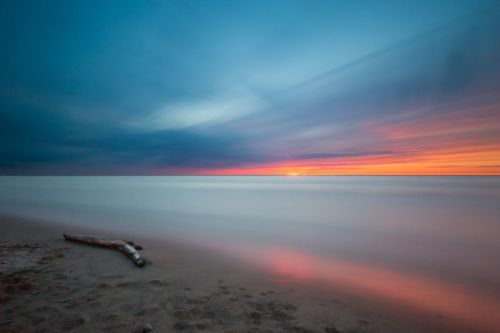Lake Victoria is the largest lake in Africa and the largest tropical lake in the world. Its waters are inhabited by hippos, otters, crocodiles and turtles.
It used to be very rich in fish, but many species have been wiped out, mainly due to indiscriminate fishing, which is one of the biggest threats to the lake's biodiversity. There are alarming predictions that Lake Victoria will die within fifty years unless radical measures are taken - the lake is heavily polluted and over-exploited.
It is located in the East African highlands, in a basin between the Albertine Rift and the East African Rift.
The name refers to a group of lakes clustered in East Africa that fill the tectonic depressions of the Great Rift Valley. This generally includes five lakes: Lake Victoria, Lake Albert, Lake Edward, Lake Tanganyika, and Lake Kivu.
Some consider only the first three to be the African Great Lakes, while others also include Lake Niasa among the five lakes.
According to estimates, around 107 million people live there.
It is the largest lake in Africa by area and the largest tropical lake in the world. It is also the second largest freshwater lake in the world (after Lake Baikal) and the third largest if all lakes, including salt lakes, are taken into account (Caspian Sea - 371 800 km2, Lake Superior - 82 410 km2).
In terms of volume, it ranks eighth in the world.
80% of the lake's water comes from rainfall, plus rivers and thousands of small streams. The largest river that flows into the lake is the Kagera, which is considered the source of the Nile and part of its upper course.
The Kagera flows through Rwanda, Burundi, Tanzania and Uganda. It has a length of 400 kilometers.
It flows out of the lake near Jinja, Uganda, as the Victoria Nile, also known as the White Nile.
The average depth is 40 m (131 ft), and the maximum depth is 83 m (272 ft). The deepest part of the lake is in the east, near Kenya, and the shallower part is in the west along the Tanzanian coast.
The area of the lake is 68,800 km2, the maximum length is 337 km, the maximum width is 250 km, and the volume is 2,750 km3.
The lake has undergone changes throughout its geologic history, beginning with the present shallow depression and ending with a series of much smaller lakes.
Core samples from the lake bed show that Lake Victoria has dried up completely at least three times since its formation. The last time the lake dried up about 17,300 years ago, and it was refilled 14,700 years ago when the African wet period began.
These include: Hippopotamus, African Otter, Spotted Otter, Swamp Mangabeys, Savannah Sitatunga (antelope), Bohor Reedbuck (antelope), Slimy Cob, Reed Rats, and Giant Shrew.
The Williams' mud turtle is restricted to Lake Victoria and other lakes, rivers, and swamps of the Upper Nile basin.
The main group in the lake is the cichlids (Haplochromis) with more than 500 species, almost all of which are endemic, including about 300 species still undescribed. This is far more fish species than in any other lake in the world (Lake Malawi is an exception).
The cichlids of Lake Victoria belong to an older group of more than 700 closely related species, which also includes the species of several smaller lakes in the region, notably Kioga, Edwards, George, Albert and Kivu.
Currently, two cichlid species, the Singida tilapia and the Victoria tilapia, are threatened with extinction.
The majority of the catch is the invasive Nile perch, which was introduced to the lake in the 1950s.
Common water hyacinth is native to South America and was introduced to Lake Victoria as a result of human activity (probably got there from Rwanda via the Kagera River in the 1980s ).
It can paralyze water transport by blocking routes, which affects the local economy.
Where the plants are found in high concentrations, there is an overall increase in disease, as hyacinth provides an excellent breeding grounds for mosquitoes and other insects. The incidence of skin rashes, coughs, malaria, encephalitis, gastrointestinal diseases, and schistosomiasis (Katayama fever) is increasing.
Common water hyacinth affects water treatment, irrigation, and water supply. It deoxygenates the water and reduces nutrients for juvenile fish. It has also happened that the plant has blocked the power intakes of hydroelectric power plants, cutting off electricity for many cities.
Their presence contributes to the purification of eutrophized water. The plants are harvested and used to produce biogas, fertilizer, etc. In 2018, two biogas digesters were installed in Dunga village in Kenya, and many more are planned.
The lake's basin has many human concentrations. Its shores are dotted with key towns: Kisumu, Kisii and Homa Bay in Kenya, Kampala, Jinja, and Entebbe in Uganda, and Bukoba, Mwanza and Musoma in Tanzania. The industry present in these areas and the lack of sewage treatment plants lead to systematic pollution of the lake.
It is estimated that Lake Victoria could become extinct within the next fifty years if no remedial action is taken.
The lake existed and was known to many Africans long before it was discovered by a European in 1858, when British explorer John Hanning Speke reached its southern shore. In honor of Queen Victoria, he named the lake after her.
The lake has many local names: Nam Lolwe, Nnalubaale, Nyanza, Ukerewe.
Since the early 20th century, ferries on Lake Victoria have been an important means of transportation between Uganda, Tanzania and Kenya.
One of these ferries, the MV Bukobaz, sank in the lake on May 21, 1996. The disaster killed between 800 and 1,000 people, making it one of the largest water disasters in Africa.
Another tragedy occurred on September 20, 2018, involving the MV Nyerere passenger ferry from Tanzania, which killed more than 200 people.












